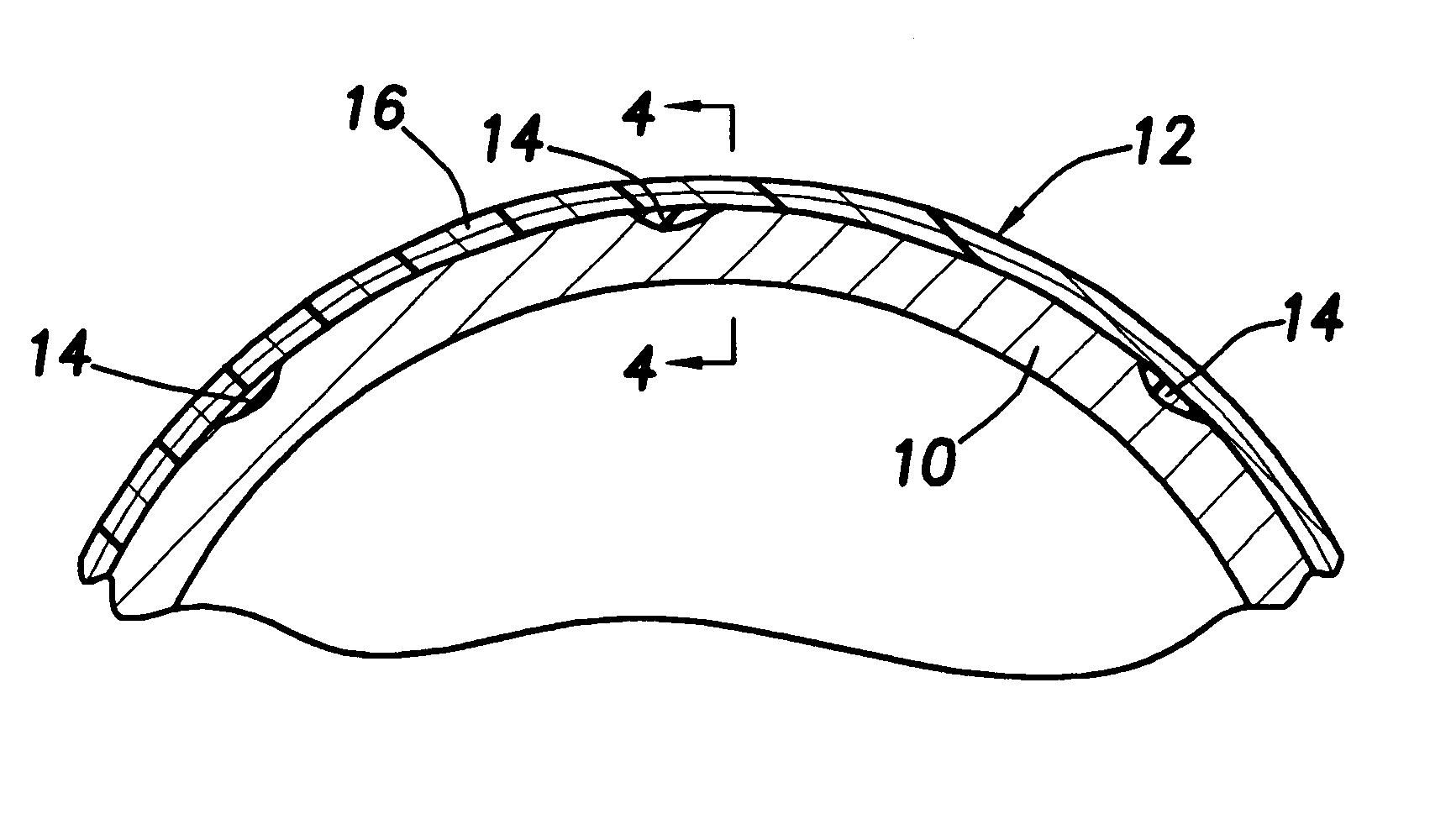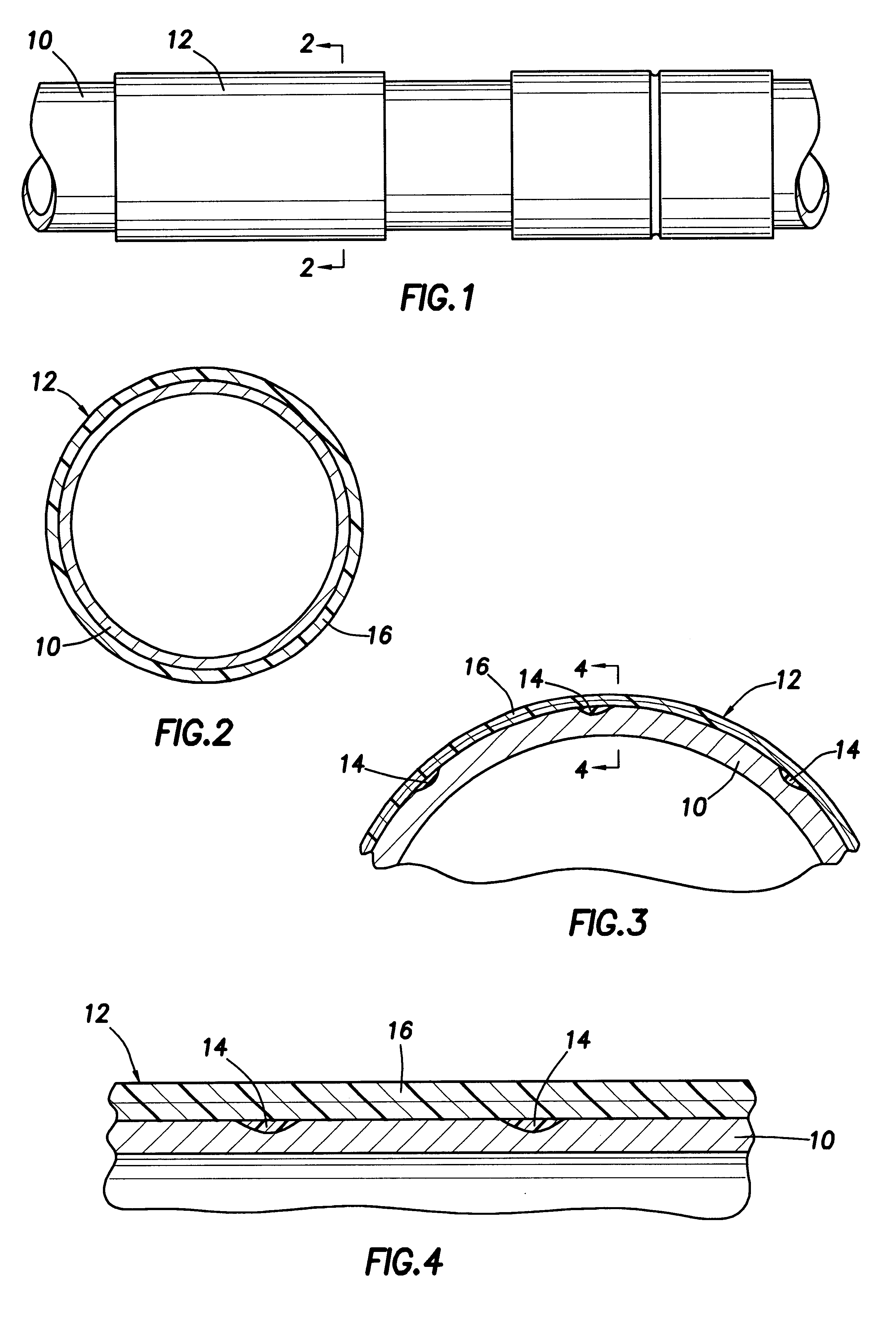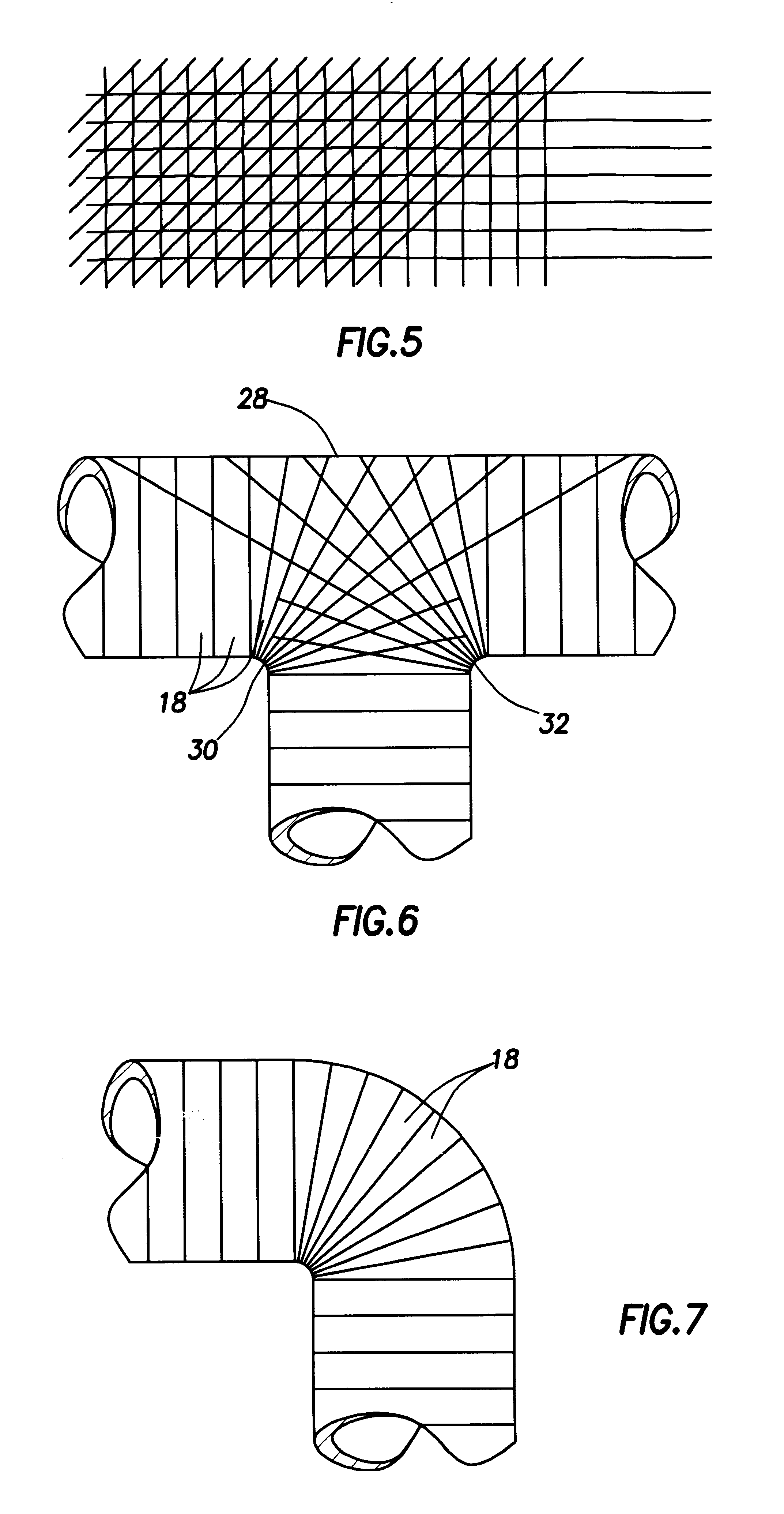High temperature composite pipe wrapping system
- Summary
- Abstract
- Description
- Claims
- Application Information
AI Technical Summary
Benefits of technology
Problems solved by technology
Method used
Image
Examples
Embodiment Construction
Referring now to the drawings and first to FIG. 1 a pressure containing pipe in the form of a horizontally oriented pipe is shown at 10, the pipe having an external wrapped repair or structurally enhancing lining of heat curable wrapped biaxially or triaxially woven fiberglass / polymer impregnated webbing material shown generally at 12 which comprises a plurality of layers of material that is applied thereto according to the method set forth herein. Although the drawings represent an external repair lining for pipes, it should be borne in mind that protective repair lining of this invention and its method of application is equally applicable to tanks and other pressure containing vessels as well. Additionally, pipe connections, such as T's, elbows and the like, may be wrapped with a composite lining according to the teachings set forth herein for the purpose of repair or to enhance the pressure containing capability of the pipeline system. Thus, the description of the present inventi...
PUM
| Property | Measurement | Unit |
|---|---|---|
| Temperature | aaaaa | aaaaa |
| Temperature | aaaaa | aaaaa |
| Time | aaaaa | aaaaa |
Abstract
Description
Claims
Application Information
 Login to View More
Login to View More - R&D
- Intellectual Property
- Life Sciences
- Materials
- Tech Scout
- Unparalleled Data Quality
- Higher Quality Content
- 60% Fewer Hallucinations
Browse by: Latest US Patents, China's latest patents, Technical Efficacy Thesaurus, Application Domain, Technology Topic, Popular Technical Reports.
© 2025 PatSnap. All rights reserved.Legal|Privacy policy|Modern Slavery Act Transparency Statement|Sitemap|About US| Contact US: help@patsnap.com



